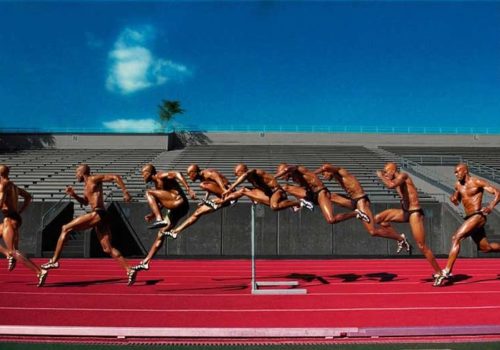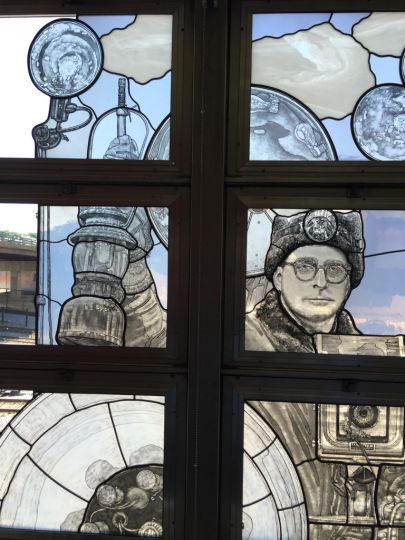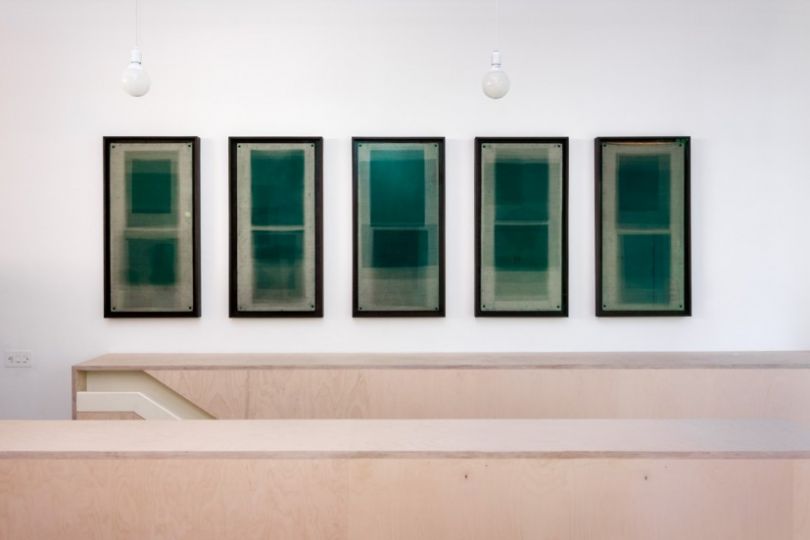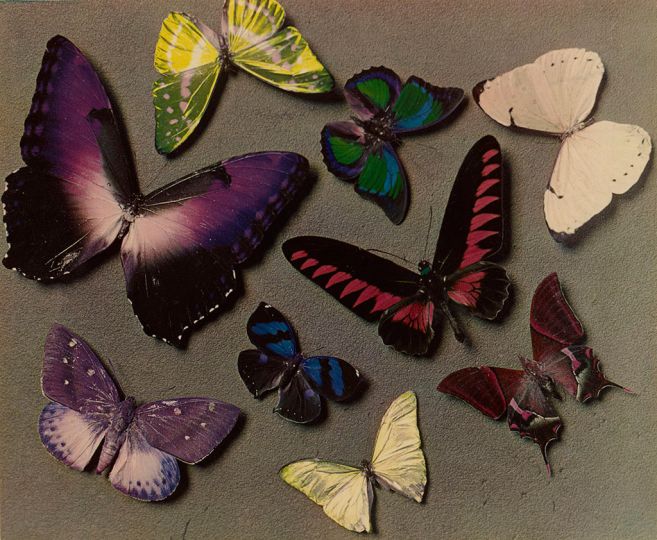Race to the Brooklyn Museum to witness Gail Buckland’s Olympian exhibition “Who Shot Sports: A Photographic History, 1843 to the Present”. It is the best show in town, and I am its biggest fan.
After an introductory gallery of smartly chosen 19th Century works, she knocks it out of the park or hits the bull’s eye – feel free to use any hyperbolic sports metaphors inadequate to describe Buckland’s brilliant work here – she hooks you with an image by the Australian photographer Krystle Wright” It seems to be a good looking landscape until you notice that someone has leapt off the top of a mountain butte as friends watch. It is crazy and exhilarating, and it puts the audience on notice that this exhibition is going to be unique.
You encounter this after you have seen video albums of effortless Jaques Henri Lartigue (waterskiing, skating) and a smashing series of animated “chronophotography” by his onetime assistant Georges Demeny, who manages to anticipate Muybridge and Edgerton in a single frame.
Then there is an absolute stunner of a portrait by an Unknown artist of an African-American baseball catcher named Javan Emory that looks 3 dimensional because the print and lighting are so good. Plus it is more than 50 years ahead of its time.
There are some great pictures here, not only the iconic ones you expect like the Neil Leifer Muhammed Ali or classic Leni Reifenstahls but also an ingenious architectural gymnast construction, a Czech image, Zdenek Lhotak’s, “Spartakiada”, 1985 or Arthur Thill’s frightening Grand Prix wall of fire. Walter Ioos Jr., Bob Martin, Heinz Kleutmeier, George Silk, Al Bello are names we may recognize. They are represented here and surprisingly so are Henri Cartier-Bresson, Walker Evans, and W. Eugene Smith, with bicycle races, baseball and football respectively. Robert Riger should be given a full museum retrospective. His New York Giants Johnny Unitas pass is a classic, but so is his sly “Three Graces” of football players conversing in their jock straps in the locker. Ernst Haas scores his early color action although Daniel Ochoa de Olza bullfighter series is the surprise. Howard Schatz brings incredible technical ability and vision to potentially classic interpretations of a hurdler running and a boxer skipping rope.
The show has a bounty of great stuff. Buckland has a noticeable affection for snow pictures from Bisson Freres on, one of which is accompanied by the photographer Mark Fisher’s statement about going to extremes “because I hope to pull out one or two pictures that transcend.” In the same convulsive way, the material and the subtle rhythm of the installation make “Who Shot Sports” captivating. The show transcends.
Buckland has been attentive to diversity and inclusiveness not only with gender and race but also sports. Curling may be the sole sport not represented. She also has paid attention to the fans and amateurs. Look for Gerry Cranham’s Nottingham fans.
All in all, lovely hurling, an Irish field hockey metaphor. The catalogue published by Knopf is well illustrated and presents supporting material and Buckland’s commentary engagingly.
Good show, sport.
W.M Hunt
W.M Hunt is a photography collector, curator and consultant who lives and works in New York. He is a professor at School of Visual Arts and is on the Board of Directors of the W. Eugene Memorial Smith Found. His book entitled “The Unseen Eye” (published by Aperture) and focusing on his personal collection is one of the most intriguing compilations of photographs.
Who Shot Sports: A Photographic History, 1843 to the Present
July 15 – January 8, 2016
Brooklyn Museum
200 Eastern Pkwy
Brooklyn, NY 11238
www.brooklynmuseum.org



















